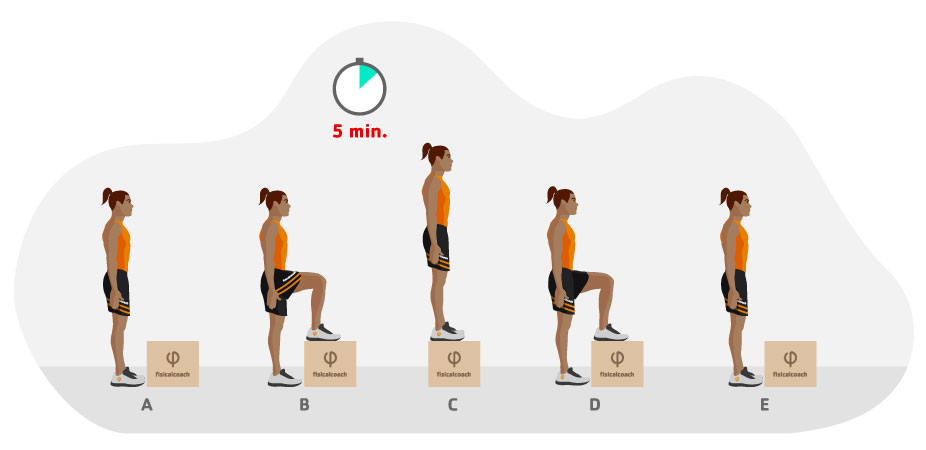
Harvard step test
The Harvard step test, a.k.a. Brohua test, is one of the simplest ways to assess maximal aerobic capacity. With this test the athlete’s recovery capacity can be assessed through his/her heart rate. It is based on the fact that the post-exercise recovery time is a reliable index to assess the subject’s cardio-respiratory capacity.
- Required Material: A bench or step 50.8 centimeters high (although 50 cm is also valid), a tape measure, a stopwatch and a metronome. If the subjects’ heart rate (HR) must be measured, a heart rate monitor will be needed.
- Procedure: The subject must descend and ascend a step of 50.8 (or 50) cm in height, during the 5 minutes of the test, at a rate of 2 seconds to go up and down (30 cycles per minute, 150 in total). A cycle starts when the participant places one foot on the step, climbs up with both feet together, fully extends the legs and straightens the back, and ends when he/she descends with the foot that went up first. The pace must be kept constantly throughout the test. If the subject is delayed by more than 10 s the test is considered terminated. A metronome can be used to mark the pace of execution.
- Assessment: Once the subject completes the test, he/she sits down and three 30-second heart rate mesurements must be performed as follows:
- The first heart rate measurement is taken one minute after the end of the test. (HR1).
- The second measurement is taken after two minutes (HR2).
- The last measurement is taken 3 minutes after the end of the test. (HR3).
A score, which will be the test result, is obtained according to the following equation: (Test duration in seconds x 100) : 2 x (HR1 + HR2 + HR3). . This result can be compared in the table with the corresponding rating.
There is a simplified form that consists of taking only one heart rate measurement one minute after the end of the exercise. The equation to be applied is the following: (Test duration in seconds x 100) : (5.5 x HR1)
Take this test and 139 more in our App